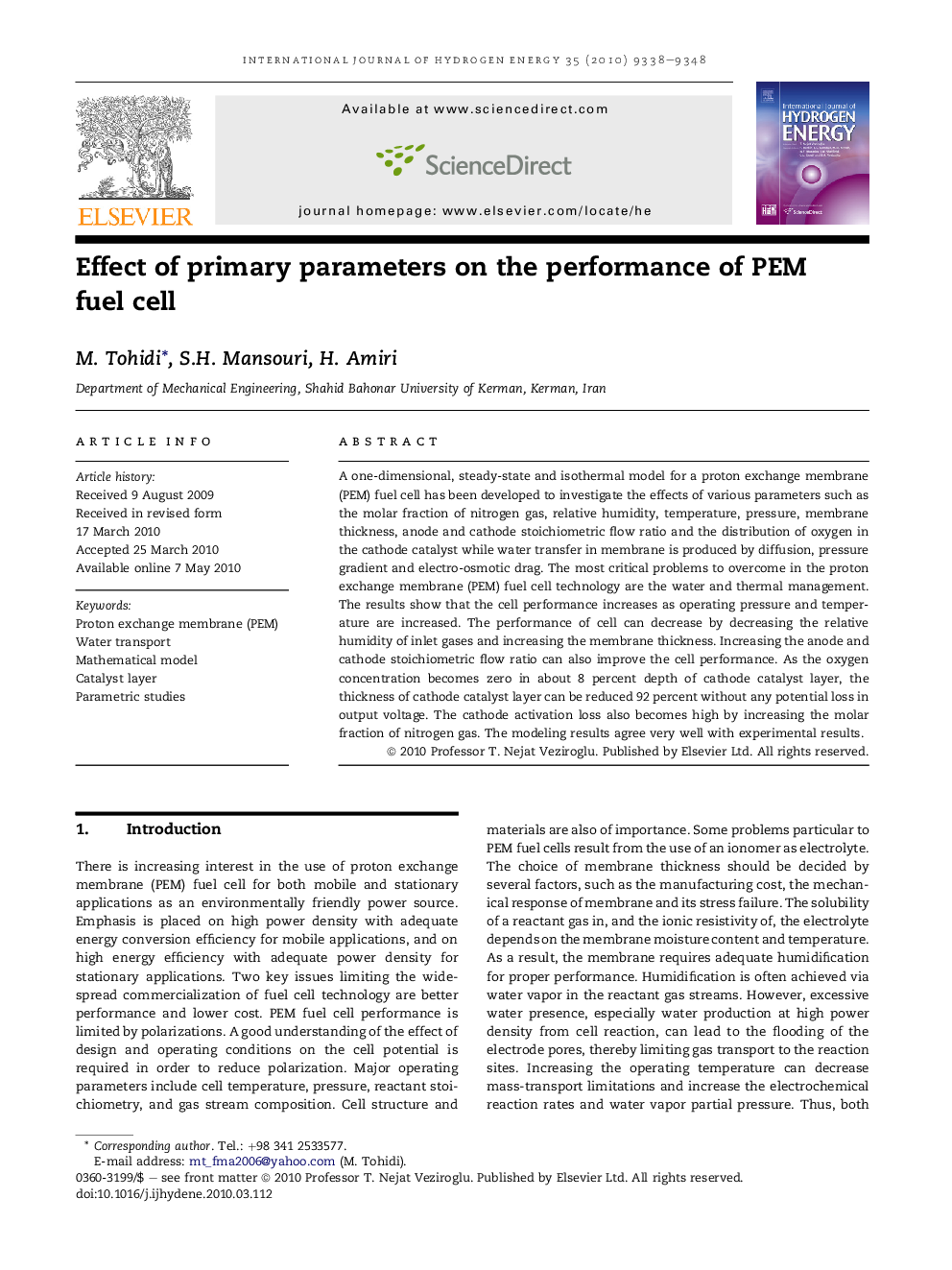| Article ID | Journal | Published Year | Pages | File Type |
|---|---|---|---|---|
| 1276993 | International Journal of Hydrogen Energy | 2010 | 11 Pages |
A one-dimensional, steady-state and isothermal model for a proton exchange membrane (PEM) fuel cell has been developed to investigate the effects of various parameters such as the molar fraction of nitrogen gas, relative humidity, temperature, pressure, membrane thickness, anode and cathode stoichiometric flow ratio and the distribution of oxygen in the cathode catalyst while water transfer in membrane is produced by diffusion, pressure gradient and electro-osmotic drag. The most critical problems to overcome in the proton exchange membrane (PEM) fuel cell technology are the water and thermal management. The results show that the cell performance increases as operating pressure and temperature are increased. The performance of cell can decrease by decreasing the relative humidity of inlet gases and increasing the membrane thickness. Increasing the anode and cathode stoichiometric flow ratio can also improve the cell performance. As the oxygen concentration becomes zero in about 8 percent depth of cathode catalyst layer, the thickness of cathode catalyst layer can be reduced 92 percent without any potential loss in output voltage. The cathode activation loss also becomes high by increasing the molar fraction of nitrogen gas. The modeling results agree very well with experimental results.
